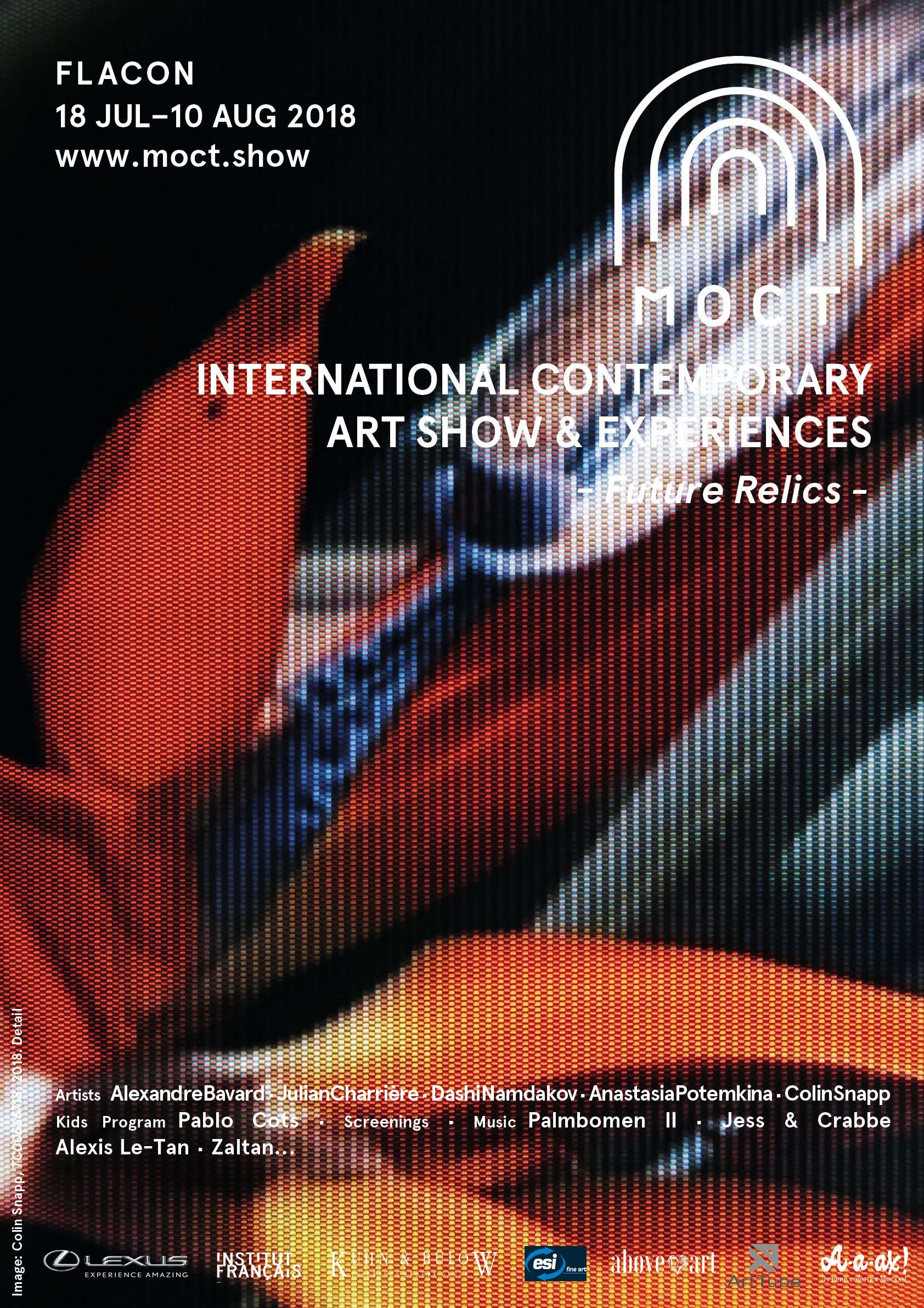Future Relics
Future Relics displays an immersive scenery composed of works that range in between history and futuristic visions. This utopian landscape highlights the intermediate state of an ever expanding and globalised world through various artistic points of view.
This is enhanced by the architecture of the exhibition rooms; built as a cube within the former factory hall, the three levels of the exhibition seem like something otherworldly that landed in the space away from all specific time and place indicators.
Alexandre Bavard, Bulky, 2015 - onwards
Life on-site performance, 2018
Installation: 6 costumes on mannequins and performance recording
As the only figures in the exhibition, the characters of the performance look and behave like they are not from this world. Touching on various notions of cultural rituals the performance can bring up a wide range of emotions in the spectators. The outcome is not pre-determined but a broad reflection on the relationship to our origins and its de-/re-construction.
The French artist Alexandre Bavard adapted the performance Bulky, which was created in 2015, with local performers from Moscow to the specifics of the spaces at Flacon. It originated as a system to display the movement generated by the graffiti tag. Whereas graffiti painting is limited to the support of the canvas or wall, the use of choreographed body language is an answer to the movement of contemporary urban art. Another main desire of Bavard was to combine several mediums of expression based on an interaction between street calligraphy, dance, and sound creation.
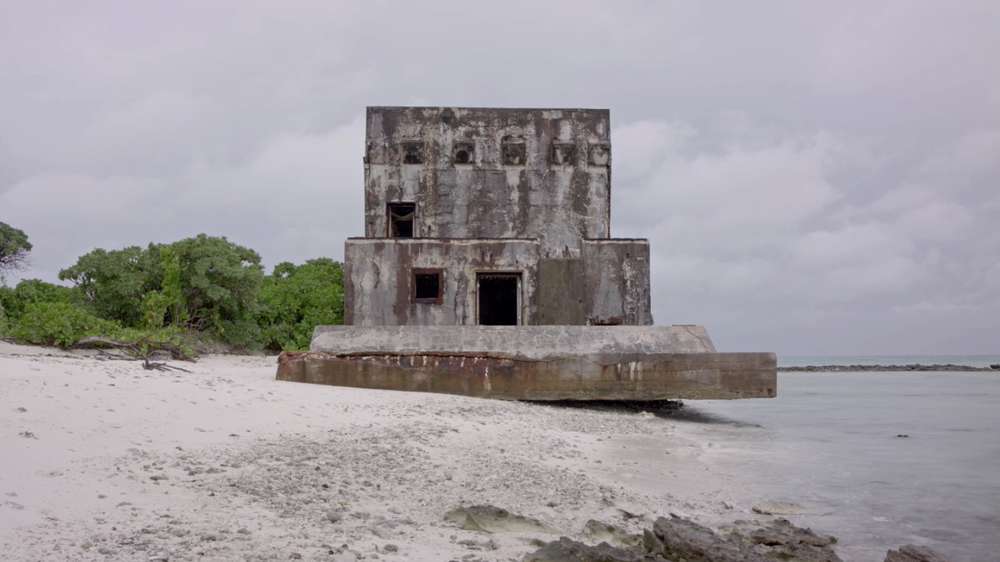
Julian Charrière, Iroojrilik, 2016
4k colour video, sound by Edward Davenport, 24 min (loop)
Charrierè’s video work captures the structures’ of the Bikini Atolls’ atomic-industrial architecture decay, its manner of editing further suggesting morphological overlaps with the monstrous wrecks lying on the bottom of the Bikini Atoll lagoon, assailed by tide and time. Making no use of archival material — its original underwater images captured at depths far below standard dive profiles — Iroojrilik is unquestionably the most unique and comprehensive perspective on the maritime ruins of Bikini ever put together. Yet, rather than explicating individual vessels or buildings, the cumulative impression given is that of an Atlantis or lost civilisation— architectural features of one ship cut together with those of others, such that it appears as though a submerged mega-structure has been discovered. On a more general note, the film employs another series of elisions and substitutions. Through a series of montages, mixing sunsets and sunrises, it proposes an uncertain distinction between daybreak and nigh fall—first light of a new day in Pacific history, and the waning of another. Visions of multiple suns and endless dawns stretch across the horizon. Pictorial energies shift and sway, like palm trees and coral ferns growing on cannon mounts, between construction and destruction, transporting the viewer to a “non-place,” or the beginning of a brave new world.
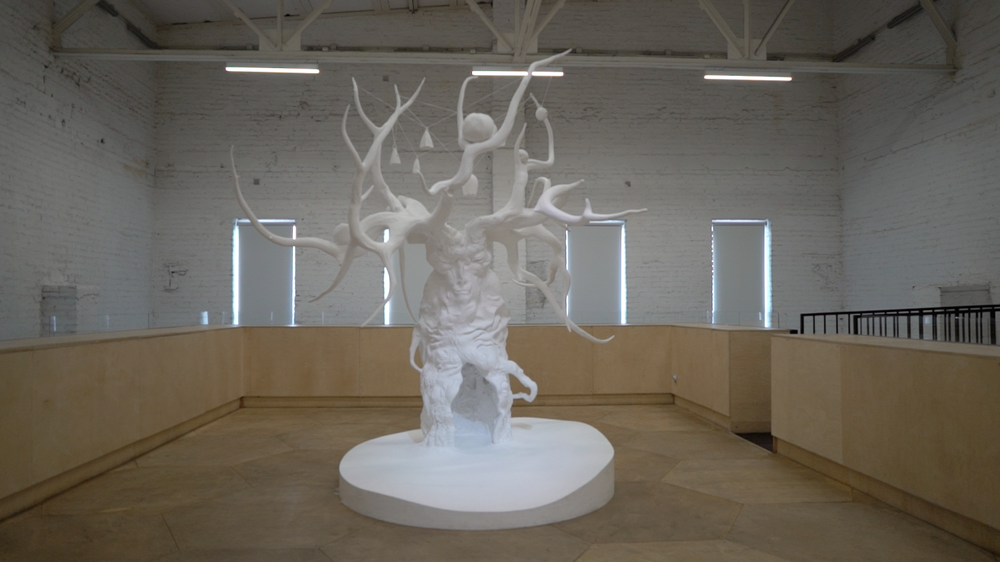
Dashi Namdakov, Guardian of Baikal, 2017
Installation and VR experience
First exhibited as a part of the 7th Moscow Biennale of Contemporary Art
Set on the seemingly floating platform or island inside the Cube, Dashi Namdakov takes the visitors on a virtual journey to his sculpture on an island at Lake Baikal, where the original sculpture will be permanently installed. Meanwhile, Namdakov and his studio created a smaller 3D-printed version of the sculpture made of biodegradable plastic. The immersive experience through the technology of virtual reality is not meant to replace the first-hand experience in nature but rather create an additional one.
The installation ‘Guardian of Baikal’ is a modern representation of traditional nomad and shaman mythologies, connected with natural forces. Archetypical elements of Namdakov’s work along with the feeling of figurative thinking create a symbol of wisdom and the human connection with nature. The sculpture echoes an old shaman, whose features look through the bark of the man-made tree - he is calm, peaceful, and strong enough to protect Baikal.
Born in the Baikal region, the Russian sculptor and artist based in London feels a strong spiritual connection with the natural environment. ‘Guardian of Baikal’ is a physical manifestation of the increasing environmental concerns threatening the UNESCO heritage site.
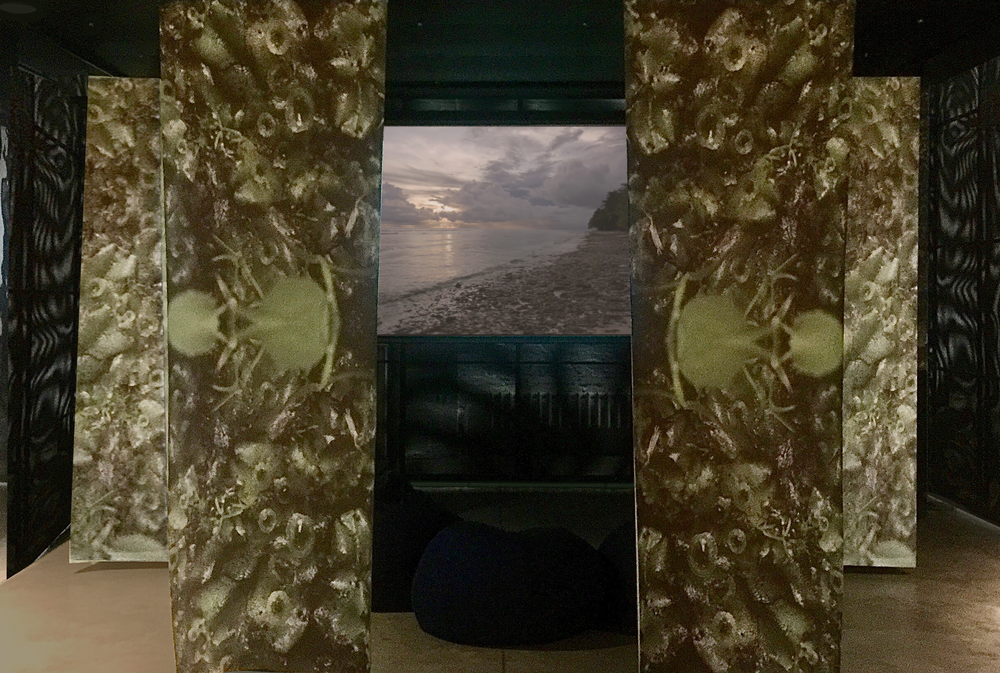
Anastasia Potemkina, Untitled, 2018
Large scale prints installation
Artist Anastasia Potemkina, a member of the Moscow-based collective Urban Fauna Lab, proposes a radical scenario, which takes visitors to a not-so-distant future. In the world of Potemkina, ancient pagan beliefs in nature and witchcraft are at the forefront of knowledge that is necessary for the survival of a society in which a new ecological thinking has replaced the urgency of politics and technological progress. For this proposition, a range of plants and herbs — some with medicinal powers and believed to have been used by witches in magical potions — are printed on large-scale paper and displayed in an immersive installation. These self-sufficient ecosystems explore the possibilities for an alternative, productive relationship between humankind’s current technological drive and the new ecological thinking of the generations to come.
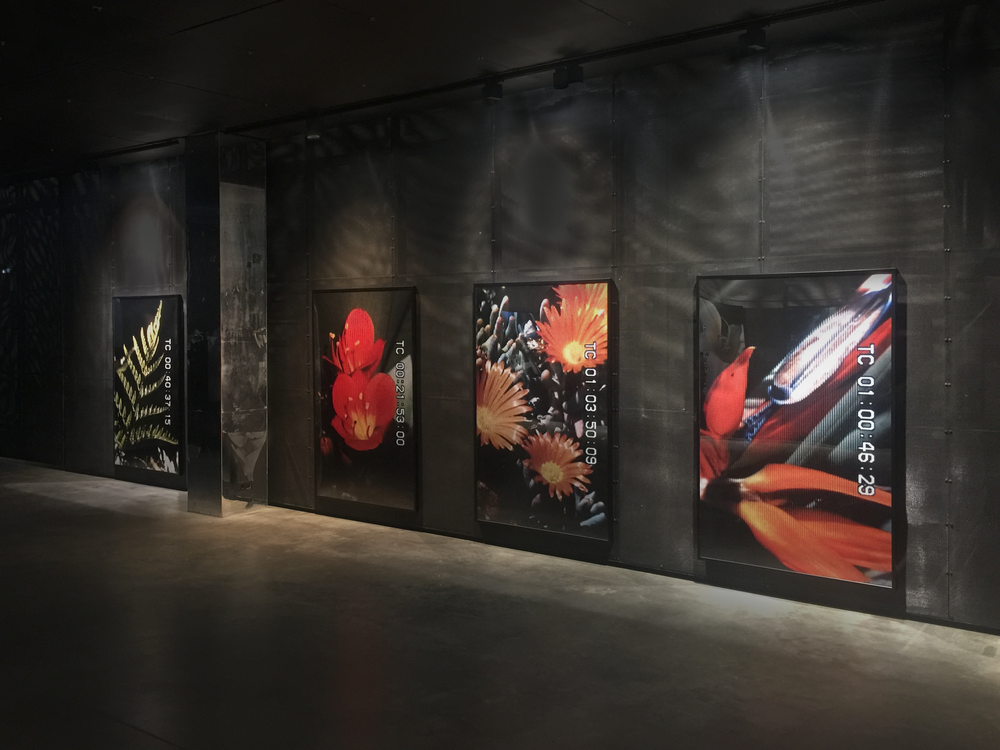
Colin Snapp, TC Studies, 2016
8 C-prints. Each 183 cm x 117 cm
TC Studies are photographs of tilting video camera flip screens capturing a specific moment anchored in time, their ephemerality frozen, recorded, and contained. The many facets of natural flora reduced to a flat surface now seen on a screen then rephotographed once more adds a second viewpoint depicting multiple levels of viewing, and in turn multiple levels from the source. An image on a small LCD screen is reinstated as 180-centimetre tall macro photos of glass pixels, which mirror the grid of the metallic walls they hang on. If time in nature is filtered through technology then it is Snapp’s ability to transform this back into a state both sculptural and organic that delivers a destabilising reversal.


